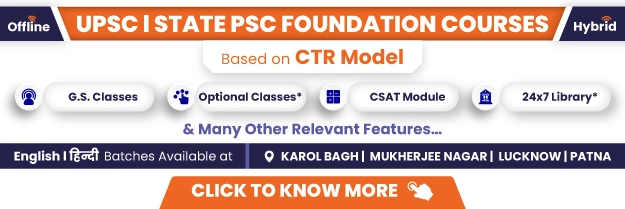|
MAURYAN EMPIRE (322-185 BCE): Reign, Ruler & Historical Significance |
MAURYAN EMPIRE – RISE OF THE MAURYAS
- Vacuum created by Alexander’s destruction of the tribal republics in Punjab and neighboring regions gave opportunity to Chandragupta Maurya.
IMPORTANT RULERS OF MAURYAN EMPIRE
| SOURCES OF MAURYAN EMPIRE | |
| LITERARY of MAURYAN EMPIRE | ARCHAEOLOGICAL of MAURYAN EMPIRE |
|
|
FOUNDER OF MAURYAN EMPIRE – CHANDRAGUPTA MAURYA
CHANDRAGUPTA MAURYA (322 BC – 298 BC)
- Chandraupta or Sandrokottos (as he is referred to in Greek literature) launched a series of wars against Dhananand and also liberated the country from Greek rule.
- He laid the foundation of the Mauryan empire in 322 BC with help of Chanakya (Kautilya).
- After conquering the region between Beas and Bay of Bengal, Chandragupta launched expeditions throughout the country and included territories of Andhra, Karnataka, Maharashtra, Gujrat and Central regions to Mauryan empire. Thus, the credit of first unification of North India is attributed to Chandragupta Maurya.
- In 305 BC, Chandragupta defeated Seleucas Nikator, the Greek empire after Alexander.
- Megasthenes, a Greek ambassador, was sent by Seleucus in the Chandragupta Maurya court.
- According to Jaina sources, Chandragupta embraced Jainism towards the end of his life and abdicated the throne in favour of his son.
- Accompanied by Bhadrabahu, a Jaina saint, he went to Shravanabelagola (Karnataka), where he died by slow starvation (Salekhan).
Shravanabelagola is a famous Jain pilgrimage center as the statue of Gomateshwar, son of Rishabnath in Kayotsarga Mudra is situated here.
SECOND RULER OF THE MAURYAN EMPIRE – BINDUSARA
- Chandragupta was succeeded by his son Bindusara, known to the Greeks as Amitrochates (Sanskrit, Amitraghata = the destroyer of foes). Madrasar, Simhasena are other names used for Bindusara.
- Bindusara followed the extreme fatalistic order (religion) ‘Ajivika’ founded by Makhali Gosala. This order had complete disregard for ‘karma’.
- Bindusara maintained good diplomatic relations with Antiochus I, the Seleucid king of Syria. Antiochus sent Deimachus as ambassador to the Bindusara’s court.
- Bindusara requested Antiochus to send him some sweet wine, dried figs and a Sophist (philosopher); the last being not meant for export, was not sent.
- Tibetan Buddhist monk Taranatha describes Bindusara as “conqueror of the land between two seas”e., peninsular India.
- Divyavadan, Buddhist biographical narrative of Mauryan Kings, mentions a revolt at Taxila being suppressed by Ashoka, the son of Bindusara; who was ‘Kumara’ or viceroy of Ujjain at that time.
THIRD RULER OF THE MAURYAN EMPIRE – ASHOKA
- Eliminating other claimants, Ashoka was crowned to the throne in 269 BC. Radhagupta, helped Ashoka in usurping the throne.
- 8 years after coronation, Ashoka fought the horrible Kalinga War in 261 BC.
- Ashoka was moved by the untold miseries caused by the war, renouncing conquest by warfare, in favour of cultural conquest. In other words, Bherighosha was replaced with Dhammaghosha.
- Later on, he became Buddhist under the guidance of Mogaliputta Tissa.
- Mogaliputta Tissa presided over the 3rd Buddhist Council held in 250 BC at Pataliputra.
- He sent missionaries for propagation of Buddhism to Sri Lanka, south Indian states, Burma, Central Asia etc. He also sent ambassadors of peace to Greek Kingdoms & Greece
- Ashoka was not an extreme pacifist – He retained Kalinga and incorporated it into his kingdom; he also didn’t disband the army.
- Under Ashoka, almost entire subcontinent came under single control except extreme south: Uttarapatha (Taxila), Avantirashtra (Ujjain), Prachi (Pataliputra), Kalinga (Toshali) and Dakshinpatha (Suvarnagiri) were important provinces.
| MAURYAN ECONOMY |
|
| MAURYAN SOCIETY |
|
| DHAMMA OF ASHOKA |
|
|
ASHOKAN EDICTS AND INSCRIPTIONS |
|
| MAURYAN ADMINISTRATION |
|
CENTRAL ADMINISTRATION:
|
|
IMPORTANT OFFICIALS:
|
|
LOCAL ADMINISTRATION:
|
|
IMPORTANT OFFICERS:
|
|
VILLAGE LEVEL OFFICERS:
|
DECLINE OF THE MAURYAN EMPIRE:
- Over-centralisation, cumbersome bureaucracy, super heavy taxation (on almost every activity) and foreign invasions were main factors of decline.
- Neglect of the North-West frontier and construction of the great wall of China.
- Financial Crisis- Ashoka incurred huge expenditure for promotion of his ‘Dhamma Mission’.
- Over-tolerant, non-violent attitude killed the fighting spirit of the army.
- After Ashoka’s death in 232 BC Mauryan Empire were incompetent and oppressive.
- Pushyamitra Shunga, a Mauryan Empire army commander, killed the last Mauryan Empire Brihadrath and founded the Shunga Dynasty in 187 BC.
- Brhamins, annoyed by Ashoka for banning rituals, supported Pushyamitra Shunga who was a Brahmin.
- Pushyamitra shunga overthrew the Mauryan king and established the Shunga dynasty.
OFFICERS IN MAURYAN EMPIRE: OFFICERS AND THEIR PROFILE
Prashasti à Prison Head; Sannidata à Treasury Head; Koshadhyaksh à Treasury Officer; Koshagar Adhyaksha à Royal Treasury Manager; Nayaka à City Security Chief; Vyavaharika à Chief Judge; Karmantika à Head of Industries & Factories; Dandapala à Head of Police; Durgapala à Head of Royal Fort; Annapala à Head of Food Grains Department; Rajjukas à Land Measurer; Akaradhyaksha à Mining Officer; Lauhadhyaksha à Metallurgy Officer; Lakshan Adhyaksha à Coin Minting; Lavanadhyaksha à Officer of Salt Department; Swarnadhyaksha à Officer of Gold Department; Ayudhadhyaksha à Weapon Manufacturing & Defence; Kunyadhyaksha à Officer of Forest; Man Adhyaksha à Office of Time & Place Determining; Sun Adhyaksha à Slaughter-House Officer; Mudr Adhyaksha à Royal Symbol, Coin; Dyut Adhyaksha à Gambling Department; Naukadhyaksha à Shipping Officer; Pattanadhyaksha à Officer of Port; Pauta Adhyaksha à In Charge of Weights and Measures.
Also Read: The Difference between Jainism and Buddhism, Their Comparisons and Similarities













